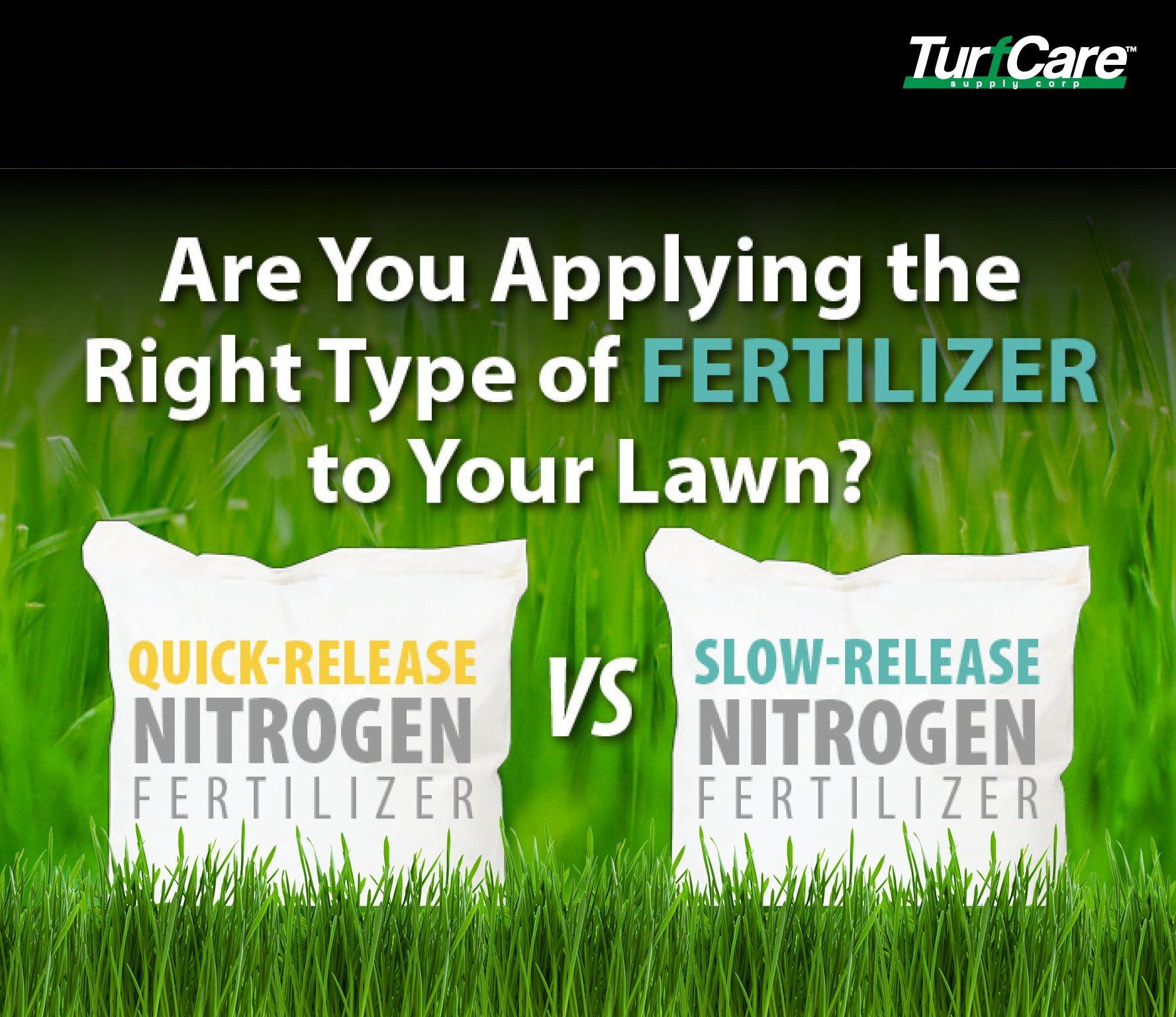Are you Applying the Right Type of Fertilizer to Your Lawn?

LEARN THE DIFFERENCE BETWEEN QUICK AND SLOW RELEASE NITROGEN FERTILIZERS
Fertilizers are used to deliver important nutrients like nitrogen to promote the optimal appearance and health of your lawn. Nitrogen is an essential amino acid, building block for plant proteins and vital to the rate at which photosynthesis occurs. A plant with sufficient nitrogen exhibits healthy growth and develops a deep green color. Choosing the correct type of nitrogen in your fertilizer can affect the look and health of your lawn as well as how often you need to apply. There are two types of nitrogen options available in fertilizers, quick- and slow- release nitrogen. Below are the pros and cons of both to help determine which fertilizer is best for you.
QUICK-RELEASE NITROGEN FERTILIZERS
Quick-release nitrogen in fertilizers makes nitrogen immediately available to your lawn.
PROS
- Encourages a rapid recovery from nutrient deficiency.
- Immediate results in the lawn growth because it stimulates quick shoot growth and greening.
- More affordable than slow-release fertilizer.
CONS
- Rapidly deteriorates from the soil by washing out of the root zone with too much rain or irrigation.
- Can cause excessive amounts of growth that weaken the health of the plant and leave it more susceptible to insects and diseases.
- Last only 2-4 weeks, which results in multiple applications needed throughout the season.
- Over application can burn your lawn.
- TIP: Do not apply to wet grass or foliage. This will cause burn-like damage to the plant because the fertilizer will dissolve on the plant before reaching the soil. Apply prior to rain or irrigation.
SLOW-RELEASE NITROGEN FERTILIZERS (ALSO KNOWN AS CONTROLLED-RELEASE FERTILIZERS)
As the name alludes, slow-release fertilizers release a steady amount of nitrogen to your lawn over a longer period of time.
PROS
- Multiple applications are less needed because it releases slow amounts of nitrogen for several weeks after application.
- Provides more uniform grass growth.
- Less likely to burn your lawn.
- Provides a steady rate of nitrogen that will maintain your lawns health throughout the season.
CONS
- Does not provide immediate high rates of nitrogen to aid in quick recovery.
- More expensive than Quick-release fertilizers (but may be a less expensive option if less applications are required).
When choosing which type of nitrogen fertilizer is best, it is important to evaluate the current needs of your lawn and the nitrogen release time required. If you have more questions please contact your local distributor or lawn care professional.
For professional fertilizers, humic and AMP-XC™ enriched products available, please visit TurfCare’s online Product Catalog.
For green industry professionals or others interested in ordering Turfcare products, please contact our Customer Service to find a distributor near you.
The TURFReport Highlights:
Additional Articles and Insights
















